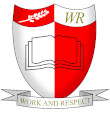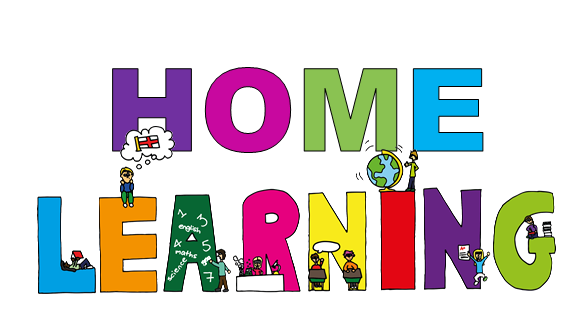We hope you had a relaxing half term break and enjoyed the sunshine! Please continue to try to do some daily Maths and English/other foundation work (remember any reading/written work can count as English if you are short on time.)
As usual, you can contact us on email or via twitter @Year3WR for any support or clarification that you need.
Miss Hallahan – s.hallahan@wransom.herts.sch.uk
Mrs Tite – l.strong@wransom.herts.sch.uk
Maths
This week in Maths we are recapping addition and subtraction. There are individual links below to each day’s video as we are following an alternative plan since White Rose have aligned with BBC Bitesize and are using the fraction work we did earlier in the term.
Sheets are all saved below as White Rose are no longer making them available for free on their website. However as school already has a subscription we are able to upload them. (Please do not pay for it yourself – likewise with twinkl!)
Please do use the video (even if just to watch it yourself in advance) to ensure that the children are exposed to the correct language and method (eg we exchange – we don’t borrow or take from the tens/hundreds). It may benefit the children to draw the Place Value Grid with Hundreds, Tens and Ones (not units) on a white board/sheet of paper or use something to physically swap them when exchanging (1p and 10p coins could work). In school we draw a circle/dot for 1, a short line to represent 10 and a square to represent 100, or they can draw circles and write the 1,10,100 in.
Please continue to use the Classroom secrets Varied Fluency and Problem Solving and reasoning sheets as extra/alternatives if children prefer them and find the White Rose work too hard/easy.
Watch the video for each day and complete the relevant worksheet (all saved below with answer sheets).
Monday – Add and subtract 2 digit numbers – not crossing 10 or 100 https://vimeo.com/417332039
Tuesday – Add 2-digit and 3-digit numbers – crossing 10 or 100 https://vimeo.com/417332285
Wednesday – Subtract a 2-digit number from a 3-digit number crossing 10 or 100 https://vimeo.com/417332443
Thursday – Add two 3-digit numbers – not crossing 10 or 100 https://vimeo.com/417332649
Friday – Spot the pattern (no video)
English
Follow the daily lessons from BBC bitesize – https://www.bbc.co.uk/bitesize/tags/zmyxxyc/year-3-and-p4-lessons/1
or…
Have a go at the teacher led lessons from Oak Academy. There are a number of different units to try, from instructions to setting and character descriptions, as well as poetry. Choose a unit that you like the sound of, just make sure to start from Lesson 1. Most of these lessons are video based and do not require printing of sheets.
https://www.thenational.academy/online-classroom/year-3/english#subjects
Grammar – Spelling, Punctuation and Grammar sheets saved below to have a go at. Each document is three versions of the same sheet so I’d recommend only printing page 5 and answers can be found on page 6.
Complete a reading comprehension on First News or Fiction Express. The latest edition of First News can be found here – https://www.wransom.co.uk/first-news-latest-edition-2/
Spelling
Try spelling games to work on suffixes –
https://www.spellzone.com/word_lists/games-4628.htm
Remember to keep going over the Spelling words for Years 1,2,3 and 4 given out in the first week (also saved below). Try to use the look, cover, write, check method,
Many of the activities below are writing or reading based, so that can count as your English lesson for the day instead if you are short on time.
Science
Before looking at the powerpoint ask – Do all animals have skeletons? Discuss.
Ask the children what the skeletons of other animals might look like e.g. What would a giraffe skeleton look like? Etc.
Show them the PowerPoint of different animal skeletons and discuss. Can they guess which animals the skeletons belong to?
Complete the Sorting Skeleton Types sheet (answers provided, first sheet is easiest, no need to print them all!)
Extra – create a poster including the following words and what they mean:
Vertebrate, invertebrate, skeleton, exoskeleton, endoskeleton, hydrostatic skeleton.
How do we know about the skeletons of animals that are already extinct?
RE/PSHE
Explain that Christians believe that Jesus gave his followers two important rules for living (read the ppt on Ten Commandments if you have time – you could link to the rules made in the other religions we’ve learnt about too):
“Love the Lord your God with all your heart and with all your soul and with all your mind, and love your neighbour as yourself.”
Answer these questions:
‘Who is our neighbour?’ (encourage children to think beyond their literal neighbours)
How can you treat your neighbour kindly?
How can we treat people who live a long way away kindly? (Include people we know and people we don’t know. Are both neighbours?)
Create a ‘good neighbour recipe’ – sheet below. (e.g. heaped tablespoon of kindness, pinch of understanding etc.)
When finished illustrate. Use these key words to help you:
Kindness, forgiveness, understanding, charity, respect, loyalty, love, truthful, faithful, honest, generous, interested, supportiveness, manners, friendship, happiness, care.
A spoonful, a glug, a stir, a bowlful, a teaspoon
History
Ask children – how do we know about the Ancient Egyptians?
Help them come up with a range of sources. (Pyramids, temples, tombs, wall paintings, artefacts, hieroglyphs.)
An artefact is something that has been made by a person. Artefacts that were made over 4000 years ago in Egypt give us clues about how the people lived at that time.
Look at the powerpoint showing Ancient Egyptian Artefacts.
Complete the sheets describing each artefact and what it tell us about the Ancient Egyptians (as many as you like – there are quite a few)
Extra – think of some questions you’d like to ask about an artefact/some artefacts.
PE
Play physical connect four or bingo! (see attachment for guide)
Have a great week and don’t hesitate to get in touch if we can help with anything.

